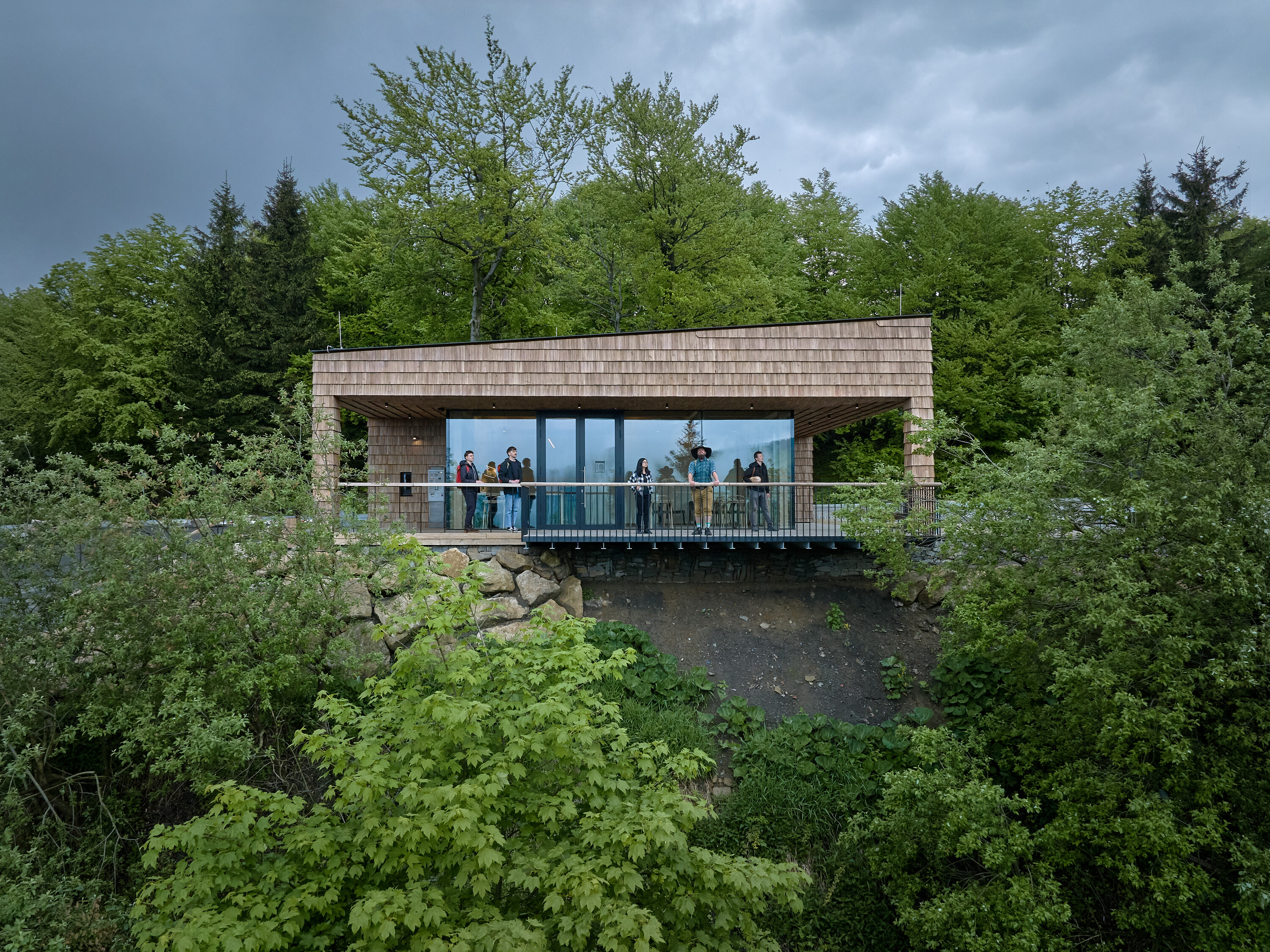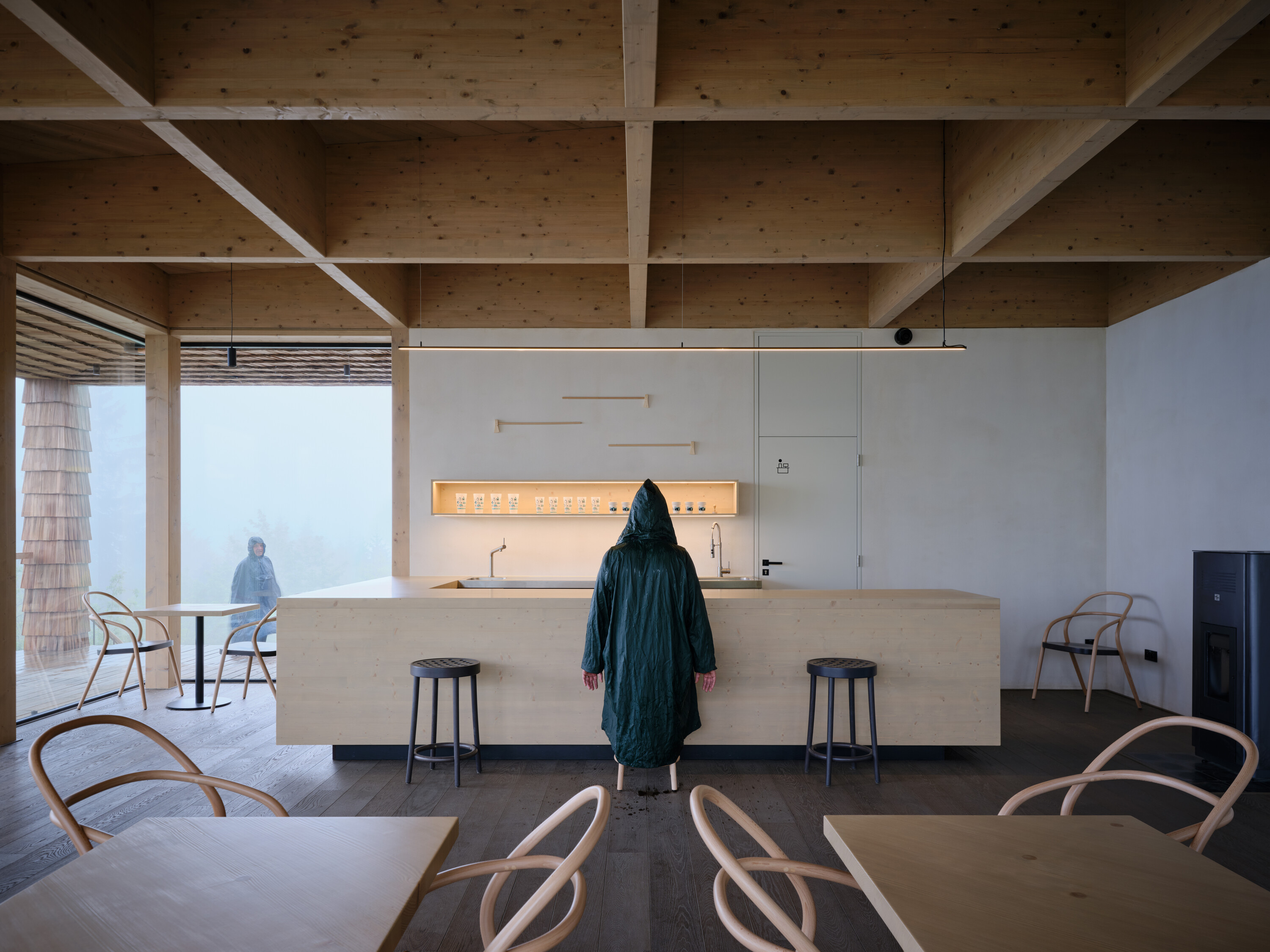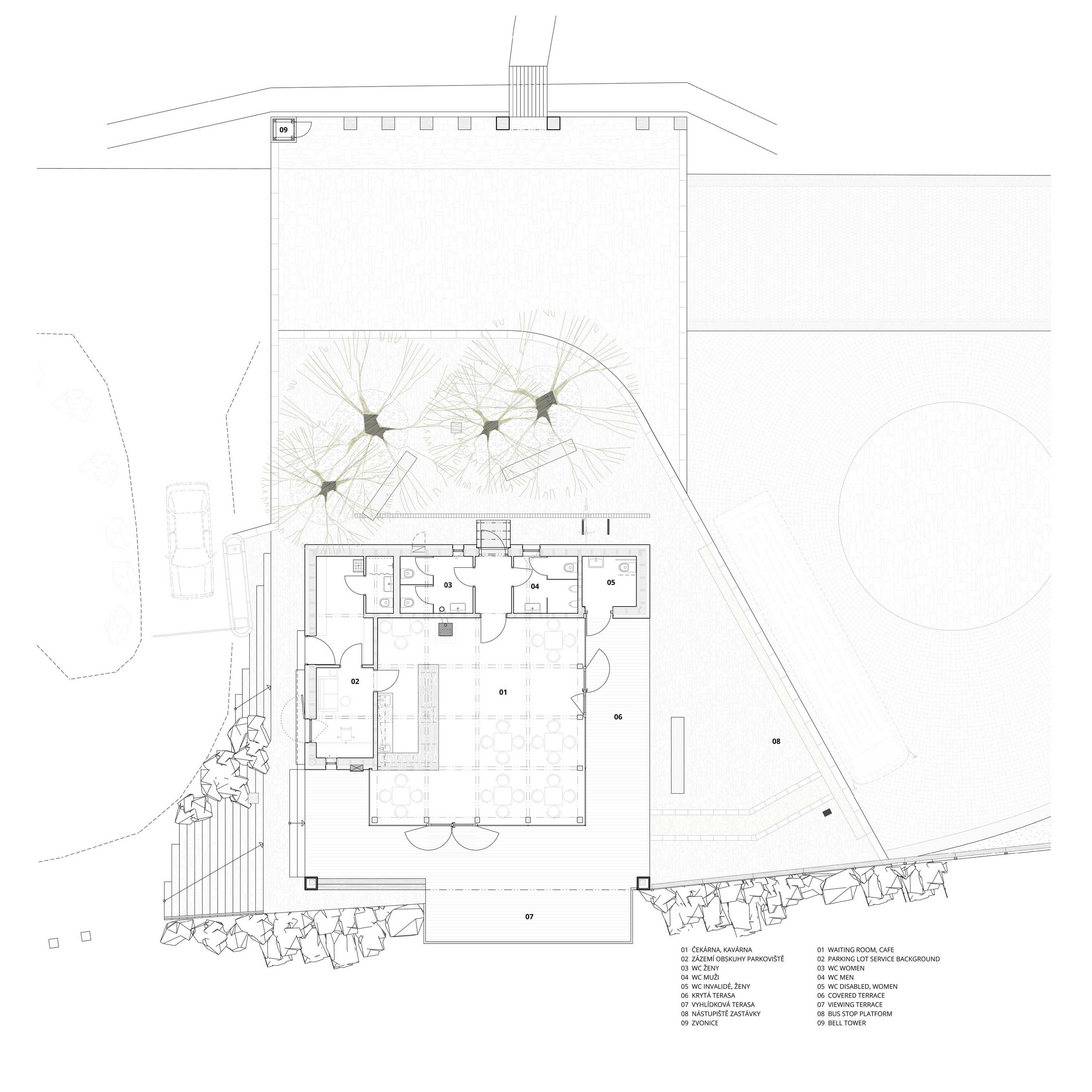
Location
Pustevny is a significant mountain point and tourist attraction on the Beskydy Mountains ridge, offering a wide range of tourist, sports, and recreational activities. Since the late 19th century, the area has been progressively urbanized due to the rise of tourism. Architecturally significant buildings have emerged in the saddle, such as shelters designed by Dušan Jurkovič and the cable car terminal by Kamil Mrva, showcasing contemporary architectural approaches. The site is easily accessible from the north by cable car from Trojanovice or by car or bus from the south via the road from Prostřední Bečva, making it a popular destination. The original secluded character of the saddle, once home to hermitages (Czech “poustevníci”, hence the name Pustevny) isolated from the outside world, has transformed into a bustling area frequently visited by less experienced tourists and those interested in Pustevny's architectural heritage.
The excessively increasing car traffic, often conflicting with pedestrian tourists in the Pustevny saddle, prompted the need to address the situation. The aim to reduce traffic congestion led to relocating the original bus stop from the saddle down to the parking lot. The project includes a new bus stop and turnaround for local buses.
The project focuses on the entry point from Prostřední Bečva, where a large parking lot is situated along the access road. The parking lot includes an area on an embankment created during road construction. Previously, a small service building for parking lot staff stood here. Together with the cable car building on the northern side, this site is a significant entry point for Pustevny visitors.
Design
The proposed layout spreads across both sides of the access road to the saddle. On one side, the main building—"the house"— adjoins the parking lot and bus stop with a turnaround, serving as their facility and enrichment. On the other side, stands a new bell tower and the portal of a forest path connecting to the route leading to the Radhošť ridge. The bell tower symbolizes human presence in the landscape and embodies a spiritual dimension, summarizing the historical and contemporary relationship between people and this place. It also symbolizes the anchoring of the created place in the landscape. The paved area between the bell tower and the house offers seating under mature beeches. The entrance building integrates a small information center with a waiting room-café, facilities for parking lot staff, a bus stop shelter, toilets, and a terrace with a landscape view. It is situated on the edge of a slope, opening towards a view of Čertův mlýn (Devil’s Mill). The interior square central space of the waiting room and info-café is half bounded by a roofed terrace and half by the solid mass of the interior layout of auxiliary rooms. The bus turnaround adjoins the building, which automatically forms a shelter for the bus stop, allowing waiting inside during bad weather. The terrace with a viewpoint forms an interconnected whole with the interior, suitable for sitting in the summer months.
The house is built on micro-piles as a wooden structure with a frame construction and a roof made of glulam timber beams forming a sloping roof with a diagonal ridge. The shingle facade refers to traditional local construction techniques, and the green roof with local mountain flora blends with the surrounding meadows. Sandstone pavements and walls reveal the core of the Beskydy stone mound.
The proposed wooden building on one side, the vertical accent of the bell tower on the other side, the stone-paved carpet between them, and the existing mature beeches growing from the hardstand form a clear landscape point. This place marks an entrance to a significant site, as an imaginary gateway to Pustevny.
Context – Transport and Municipal Development
Reducing the intensity of individual car traffic is one of the goals for the broader area. The municipality significantly supports public transport as an alternative, and its current increase in intensity is important. The municipality, together with the construction of new cycle paths, works on renovating and securing individual bus stops throughout its territory. The Pustevny Gateway project and the subsequent modifications of other bus stops in the municipality are part of the effort to cultivate and make public transport more attractive. These stops are designed as part of a unified architectural concept in connection with the new station at Pustevny. Through these efforts, the municipality continues to shape its contemporary architectural expression.
Over the past decade, the municipality has focused on improving and building public spaces and structures with an emphasis on architectural quality. These projects include the new village square, the revitalization of the village center, the Kněhyně playground, and the extension of the primary school. Following the realization of the Pustevny Gateway, a project for the cultivation of other public spaces in Pustevny is being prepared.










디자인팀 Daniel Baroš, Michal Vašek, Jan Šimíček
위치 Czech Republic, Prostřední Bečva 768, 756 56 Prostřední Bečva
프로젝트기간 2019 - 2022
준공 2024
연면적 186m²
사진작가 BoysPlayNice
'Architecture Project > Other' 카테고리의 다른 글
| TipiTop Tents, Glamping Tents (0) | 2024.10.23 |
|---|---|
| 코르테베키아 광장 / 인아웃 아르키테투라 (0) | 2024.10.22 |
| Renovation of Shanghai Relay Factory (0) | 2024.10.18 |
| Paper space : A folded hometown / Immediacy Design and Research Office (0) | 2024.10.17 |
| Heifei MixC Rooftop Landscape Regeneration (0) | 2024.10.17 |
마실와이드 | 등록번호 : 서울, 아03630 | 등록일자 : 2015년 03월 11일 | 마실와이드 | 발행ㆍ편집인 : 김명규 | 청소년보호책임자 : 최지희 | 발행소 : 서울시 마포구 월드컵로8길 45-8 1층 | 발행일자 : 매일







